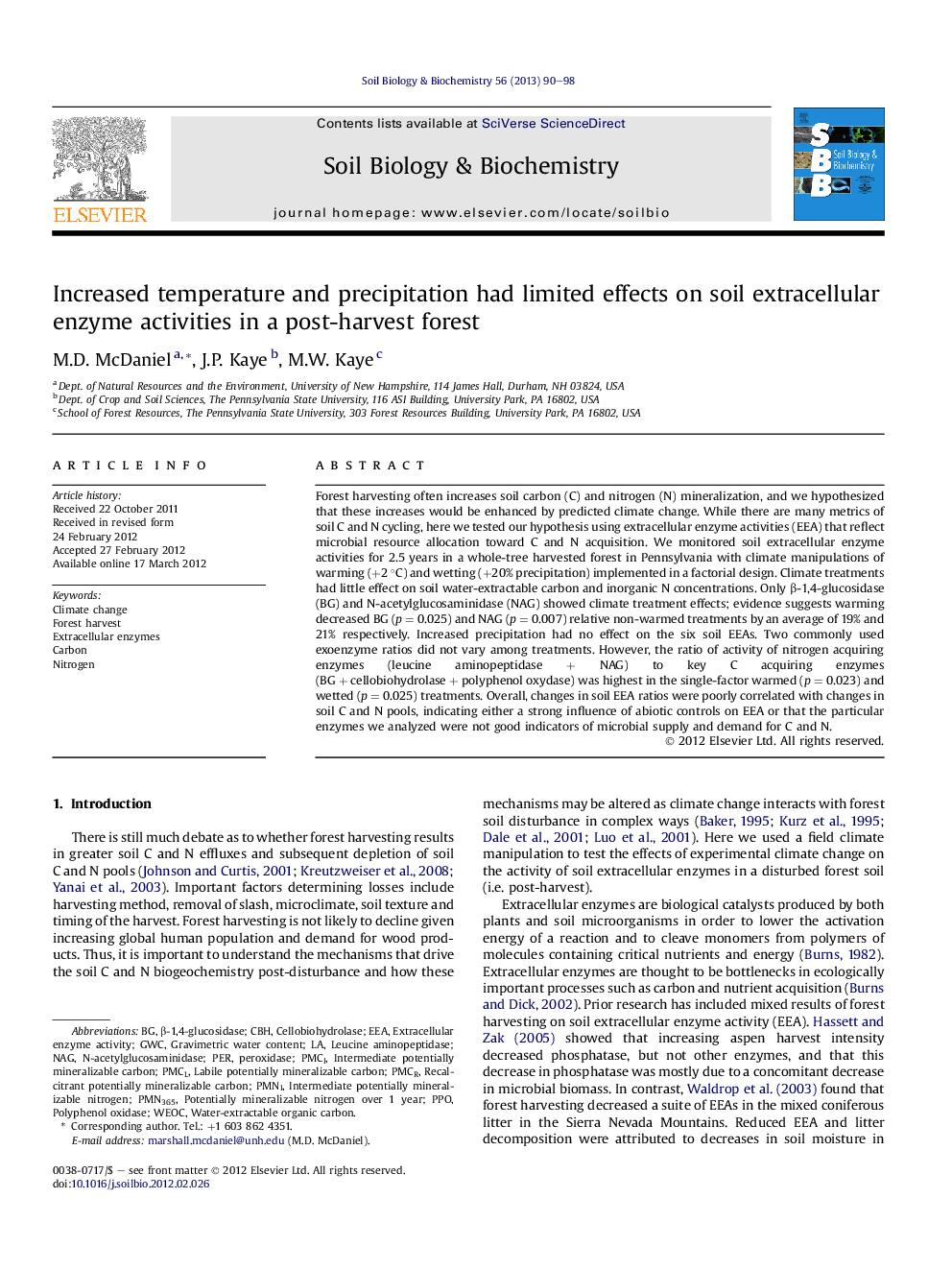| Article ID | Journal | Published Year | Pages | File Type |
|---|---|---|---|---|
| 2024857 | Soil Biology and Biochemistry | 2013 | 9 Pages |
Forest harvesting often increases soil carbon (C) and nitrogen (N) mineralization, and we hypothesized that these increases would be enhanced by predicted climate change. While there are many metrics of soil C and N cycling, here we tested our hypothesis using extracellular enzyme activities (EEA) that reflect microbial resource allocation toward C and N acquisition. We monitored soil extracellular enzyme activities for 2.5 years in a whole-tree harvested forest in Pennsylvania with climate manipulations of warming (+2 °C) and wetting (+20% precipitation) implemented in a factorial design. Climate treatments had little effect on soil water-extractable carbon and inorganic N concentrations. Only β-1,4-glucosidase (BG) and N-acetylglucosaminidase (NAG) showed climate treatment effects; evidence suggests warming decreased BG (p = 0.025) and NAG (p = 0.007) relative non-warmed treatments by an average of 19% and 21% respectively. Increased precipitation had no effect on the six soil EEAs. Two commonly used exoenzyme ratios did not vary among treatments. However, the ratio of activity of nitrogen acquiring enzymes (leucine aminopeptidase + NAG) to key C acquiring enzymes (BG + cellobiohydrolase + polyphenol oxydase) was highest in the single-factor warmed (p = 0.023) and wetted (p = 0.025) treatments. Overall, changes in soil EEA ratios were poorly correlated with changes in soil C and N pools, indicating either a strong influence of abiotic controls on EEA or that the particular enzymes we analyzed were not good indicators of microbial supply and demand for C and N.
► We tested climate change interactions on soil enzymes after a forest harvest. ► Climate treatments: ambient, warm (+2 °C), wet (+20% precipitation), and warm+wet. ► Warming decreased soil β-1,4-glucosidase and N-acetyl-glucosaminidase activities. ► Soil DOC, C:N, and total N best predicted variation in exoenzyme activities. ► Climate change had limited effects on soil exoenzymes in a post-harvest forest.
